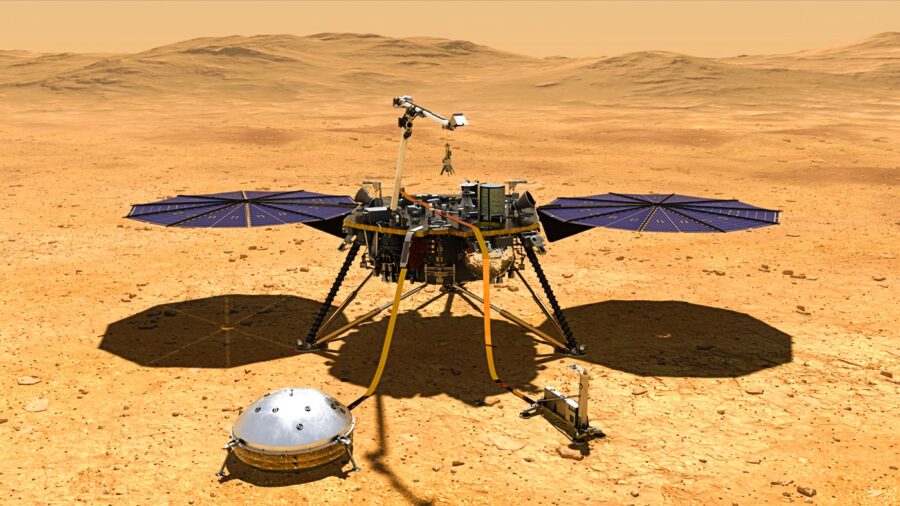NASA’s New Rover Has Died On Mars
NASA's InSight Rover has run out of power on the planet Mars.

Some sad news recently came out of NASA, with the agency reporting the retirement of its Interior Exploration using Seismic Investigations, Geodesy and Heat Transport (InSight) rover. According to The Verge, the rover’s demise wasn’t unforeseen since the solar panels that generate its electricity have been accumulating dust ever since they unfolded. In fact, the rover was expected to run out of juice over the summer, but thanks to some pleasant weather on Mars, it powered through for a few additional months.
NASA originally planned to launch the InSight mission in 2016, but an instrument problem in the rover caused a delay. The rover ended up launching on May 5, 2018, aboard an Atlas V-401 launch vehicle and it successfully landed on the Red Planet on November 26, 2018. Prior to its recent expiration in mid-December, the rover was active on Mars for a little over four years.

The rover was a mission designed by NASA to study the deep interior of the Red Planet. The InSight rover was manufactured by Lockheed Martin Space and managed by NASA’s Jet Propulsion Laboratory. Most of its scientific instruments were built by various European agencies.
NASA launched the InSight mission to accomplish several things. One of the objectives was to place a seismometer, called Seismic Experiment for Interior Structure (SEIS), on the surface of the Red Planet to measure seismic activity and capture three-dimensional models of the planet’s interior. Another objective was to measure heat transfer utilizing a heat probe known as HP to study the early geological evolution of Mars.
According to a post made on the official NASA InSight Twitter page on December 19, the mission was mostly successful. The rover was able to detect more than 1,000 marsquakes in its four years of operation. The seismic data will allow scientists to better understand how the planets in our solar system formed and evolved.
In a recent press release, NASA reported that December 15 was the last time it made contact with the InSight rover. The agency intends to continue to listen, but since the mission controllers at the agency’s Jet Propulsion Laboratory in Southern California have been unable to communicate with the rover after multiple attempts, they’ve been led to conclude the rover’s solar-powered batteries have run out of juice. Although the rover’s demise is certainly devastating, Thomas Zurbuchen, an associate administrator of NASA’s Science Mission Directorate in Washington, believes the data the InSight rover has collected deserves to be celebrated.
The NASA administrator said, “I watched the launch and landing of this mission, and while saying goodbye to a spacecraft is always sad, the fascinating science InSight conducted is cause for celebration.” Zurbuchen is confident the seismic data alone offers tremendous insights into various rocky bodies, including Earth. Although the rover will remain on Mars to collect dust, it’s great to know it fulfilled its purpose.
Another NASA employee, Bruce Banerdt, stated in a press release that he considered InSight to be a dear friend and colleague while operating on Mars for the past four years. Banderdt is the mission’s principal investigator, and he echoed Zurbuchen’s statements about the difficulties in saying goodbye. He also agreed that the rover has earned its well-deserved retirement.












